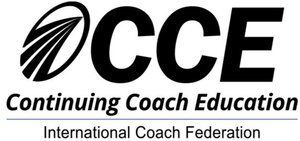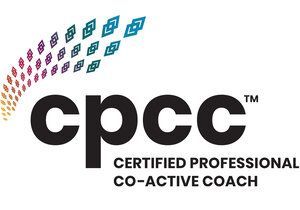Finding Love in the Time of Swipes

Amanda* (not her real name) sat on the couch opposite me, phone in hand, staring at the freshly downloaded dating app. Again. It wasn’t the first time she had sworn off swiping, declaring herself done with the endless loop of mismatched conversations and vanishing connections. But here she was, redownloading it after another short-lived hiatus.
“Maybe this time,” she said, “there’ll be better options?” Yet, a part of her knew this pattern all too well - the mix of hope and hesitation, the lure of possibility clashing with memories of frustration. Amanda’s experience is far from unique. For many, dating apps represent both opportunity and emotional exhaustion, a seemingly endless cycle of deleting, reinstalling, and wondering if meaningful connections are still out there.
While dating has always had its challenges, the digital age has introduced unique complexities that require a different kind of navigation. From a therapist’s perspective, modern dating offers unique opportunities for growth while testing one’s ability to navigate uncertainty and vulnerability. It provides invaluable insights into emotional awareness, boundary-setting, and personal values. By taking a closer look at the most common challenges in modern dating, we can uncover strategies to approach them with courage, curiosity and intentionality.
The Double-Edged Sword of Dating Apps
Dating apps are a prime example of modern dating’s double-edged sword. Take, for instance, the cycle many people find themselves in: downloading an app with hopeful optimism, swiping through matches, and engaging in a few conversations that seem promising. Then, after a string of awkward exchanges or being ghosted, the frustration sets in. The app gets deleted. Weeks later, optimism creeps back in, and the app gets reinstalled. It’s a love-hate relationship that feels all too familiar to many.
This pattern highlights the paradox of choice, a psychological concept popularized by Barry Schwartz. When faced with too many options, our ability to make satisfying decisions diminishes. Dating apps, while offering a wider pool of potential matches, can leave users feeling overwhelmed and disheartened. To break free from this cycle, it’s helpful to set boundaries. Limiting the time spent swiping and focusing on meaningful conversations rather than sheer volume can make the process more manageable and enjoyable.
Decoding Mixed Signals
Mixed signals are another frequent challenge in modern dating. Imagine meeting someone who seems genuinely interested, only for their communication to become inconsistent. Plans get cancelled, being left on read, and you can’t help but wonder whether to hold on or move on. This ambiguity often stems from the indirect nature of digital communication, where tone, body language, and intent are easily lost.
Studies on interpersonal communication reveal that nonverbal cues play a significant role in understanding emotional intent. Without them, misunderstandings are common. The key to navigating this is clear and direct communication. Asking straightforward questions about intentions can reduce uncertainty and help establish where you stand, sparing yourself unnecessary overthinking.
The Pain of Ghosting
Ghosting - abruptly cutting off communication without explanation - is a particularly painful phenomenon in modern dating. It leaves individuals questioning what went wrong and often triggers feelings of rejection. Research shows that ghosting activates areas of the brain associated with physical pain, underscoring the deep emotional impact it can have.
Understanding that ghosting often reflects the ghoster’s avoidance tendency as well as discomfort with confrontation rather than your worth can be a powerful reframe. It’s a reminder that closure doesn’t always come from external validation but from self-compassion and acceptance.
The Reality of Rejection
Rejection is another universal experience, yet it remains one of the hardest to navigate. It often prompts negative self-reflection, leading individuals to question their attractiveness or compatibility. However, resilience research highlights the importance of reframing rejection as redirection. It’s not about your shortcomings but about aligning with someone whose values and goals better match your own.
By adopting a growth mindset, rejection becomes less about failure and more about learning. This perspective not only builds confidence but also fosters a healthier approach to future connections.
The Pressure to Be Perfect
Social media adds another layer of complexity to modern dating, often creating pressure to present an idealized version of oneself. The curated lives portrayed online can set unrealistic standards, making dating feel more like a performance than an authentic experience.
Focusing on authenticity rather than external validation can help alleviate this pressure. By being genuine and present, you create deeper, more meaningful connections that are built on trust rather than appearances.
Navigating Dating Fatigue
The repeated cycles of connection and disconnection can lead to dating fatigue, where the process feels draining rather than exciting. To counter this, it’s important to prioritize quality over quantity and allow yourself breaks when needed. By approaching dating with realistic expectations and self-care, you can renew your energy and optimism.
A Practical Perspective on Modern Dating
Modern dating isn’t about a perfect formula or guaranteed success. It reflects the complexities of human connection in a fast-paced, technology-driven world. Dating apps and other digital tools are neither inherently good nor bad - they’re simply one of many resources available to foster connection. While these platforms can be frustrating, they also offer opportunities to meet people you might never encounter otherwise.
Rather than viewing apps as the definitive path to love, see them as one piece of a broader approach. Pair their convenience with intentionality: prioritize offline interactions, nurture existing relationships, and remember that your self-worth isn’t tied to your online presence. Modern dating doesn’t need to be a source of despair. It can be a reminder of the resilience and adaptability required to maximize the evolving ways we connect as humans










